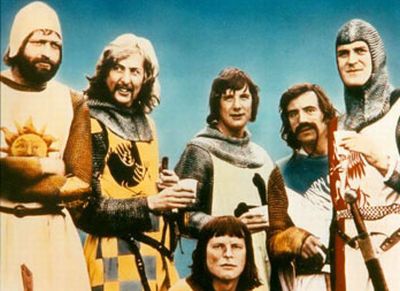Blog
Published: Irish Times, September 13 2008“SALTED PORRIDGE. DRIED MEAT. LEEKS. GOATS MILK…

“Anything that doesn’t require refrigeration, basically. Chuck it all in a pot and then boil it up…” It’s difficult to identify quite which element of historical military re-enactment least appeals to this squeamish civilian of the 21st century. It could be the drafty costumes or public scorn. Then, of course, there’s the very real possibility of having my eye taken out by some hyperactive fund manager with a lance. But a new contender has snook up along the outside rail: the horrific-sounding lunchtimes.
“Oh no, that’s not just your lunch,” laughs John Looney, the founder of re-enactment website LivingHistory.ie. “That has to last you two days – that’s your breakfast dinner and tea!” From Monday to Friday, Looney is an IT professional with Google. By the weekend, he says, he wants to get as far away from computers as he can. As a historical re-enactor, that can mean sewing clothes with bone needles, casting bronze axes, staging spear fight demonstrations for children or even sleeping in a crannog. “A museum can put up a diorama about knights or medieval warriors. But it’s a completely different experience for the kids if they can come up and talk to us, touch the armour and feel the weight of the swords.”
Whereas a museum exhibit requires a high level of costume authenticity, the emphasis in battle re-enactment is on the safety and believability of the combat. “If you’re doing something like the Battle of Hastings in front of 25,000 spectators, the public are looking for Hollywood style action” he says, comparing the technique required to the techniques used in World Wrestling Federation. “It’s called full speed combat display. It’s not real but it looks authentic and, like the W.W.F. again, the kids think it’s the most exciting thing they’ve ever seen!”
What about adults though? What do John’s family make of this unusual hobby? “My wife thinks it’s like cowboys and Indians. She doesn’t understand how grown men can dress up in skirts and whack each other with sticks. But we do a lot of training and its’ very safe. My brother plays soccer and he’s gotten a lot more injuries than I’ve ever had.”
Does he ever wonder, I ask, how he’d have fared in a real battle? “In a medieval battle you were very unlikely to die,” he replies. “Medieval battles ended when the majority of one side thought they might lose. Not would lose – might lose. If the enemy concentrated their effort on my left flank, a majority of soldiers on the left flank would think ‘Oh my God, I could get hurt here!’ and just run. They didn’t stand and die like they were trained to do in Napoleonic times.” The irony, in fact, is that as a re-enactor now for ten years, he has probably seen far more combat than any medieval soldier. “If you had a good commander you might last twelve or thirteen battles in a campaign. That was it.”
While most re-enactors are regarded as mildly eccentric at worst, re-enactments of more recent events have been known to stir up controversy. Last year a BBC investigation revealed how one SS re-enactment group, the Second Battle Group, had been infiltrated by real life neo-Nazis. Looney’s own weapon of choice is the sword, which confines him to the period prior to the early 1500s. He acknowledges that World War II has become very popular for subject matter for others in recent years. But he insists that historic sensitivities are taken into account and that any “weirdos” are weeded out.
“The reason some guys like to do German re-enactment is because the Germans always had the best kit. If you want to look cool, you got for the Nazis.” In Britain it is illegal to display a swastika in public for any reason. That law does not exist in Ireland and Nazi themed exhibits have been staged at some shows in this country. “What we found in Ireland was that the public had no problem with the Nazis.” Perhaps unsurprisingly, that benign reaction did not extend to Black and Tan uniforms. “People definitely had a problem with that. Big time. They said ‘These people murdered civilians you know. How can you put this on as entertainment?’”

Leave a Comment